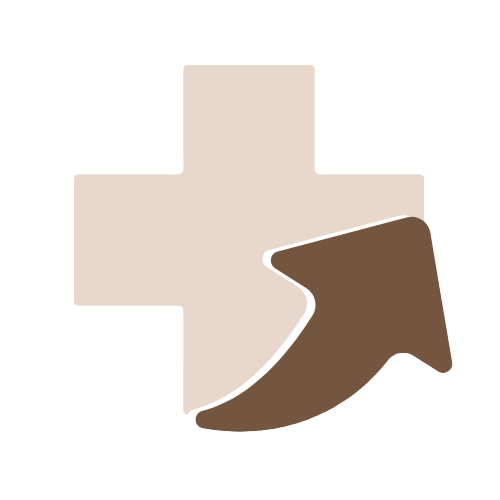Bronchospasm
Overview
Bronchospasm refers to the sudden tightening of the muscles surrounding the airways in the lungs, leading to narrowing of the bronchi and bronchioles. This results in breathing difficulties, wheezing, and chest tightness. Bronchospasm is commonly associated with asthma but can also occur in other respiratory conditions or as a reaction to allergens, medications, or physical exertion. It is a reversible condition, but in severe cases, it can lead to respiratory distress if not treated promptly. Proper management of underlying causes and triggers is key to controlling bronchospasm episodes.
Causes
Bronchospasm can be triggered by a variety of factors that irritate or inflame the airways:
- Asthma: The most common cause of bronchospasm, where airway hyperreactivity leads to episodes of narrowing and breathing difficulty.
- Allergic Reactions: Exposure to allergens such as pollen, dust mites, pet dander, or mold can trigger bronchospasm in sensitive individuals.
- Exercise-Induced Bronchospasm (EIB): Physical exertion, especially in cold or dry air, can lead to temporary airway narrowing.
- Chronic Obstructive Pulmonary Disease (COPD): Individuals with COPD may experience bronchospasm during exacerbations.
- Infections: Respiratory infections like bronchitis or pneumonia can cause airway inflammation and spasm.
- Medications: Certain drugs like beta-blockers, aspirin, or NSAIDs can provoke bronchospasm in susceptible individuals.
- Smoke and Air Pollution: Exposure to cigarette smoke, industrial chemicals, or air pollutants can irritate the airways.
- Gastroesophageal Reflux Disease (GERD): Acid reflux into the airways can induce bronchospasm in some individuals.
- Anesthesia: Bronchospasm can occur during or after surgery, especially in patients with asthma or reactive airway disease.
Symptoms
The symptoms of bronchospasm develop rapidly and can range from mild to severe:
- Wheezing: A high-pitched whistling sound when breathing, especially during exhalation.
- Shortness of Breath: Difficulty breathing or feeling unable to take a full breath.
- Chest Tightness: A squeezing or pressure sensation in the chest.
- Coughing: Often persistent and may worsen at night or with activity.
- Fatigue: Difficulty breathing can lead to tiredness and exhaustion.
- Rapid Breathing (Tachypnea): An increased breathing rate to compensate for restricted airflow.
- Anxiety: Breathing difficulty can cause panic or anxiety, which may worsen symptoms.
Diagnosis
Diagnosis of bronchospasm is based on clinical evaluation, medical history, and breathing tests to assess airway function:
- Medical History: Review of symptoms, history of asthma, allergies, or respiratory conditions, and identification of possible triggers.
- Physical Examination: Listening to lung sounds with a stethoscope to detect wheezing or decreased breath sounds.
- Pulmonary Function Tests (Spirometry): Measures lung capacity and airflow obstruction before and after bronchodilator treatment.
- Peak Expiratory Flow (PEF): A handheld device to monitor changes in airflow, useful in asthma management.
- Methacholine Challenge Test: Used in certain cases to diagnose airway hyperresponsiveness by provoking bronchospasm under controlled conditions.
- Allergy Testing: Identifies specific allergens that may trigger bronchospasm.
- Chest X-ray: May be performed to rule out other causes of respiratory symptoms like infections or structural abnormalities.
Treatment
Treatment of bronchospasm focuses on quickly relieving airway constriction and addressing underlying causes or triggers:
Immediate Symptom Relief:
- Short-Acting Beta-Agonists (SABA): Inhalers like albuterol or salbutamol provide rapid relaxation of airway muscles.
- Anticholinergic Inhalers: Medications such as ipratropium bromide can offer additional bronchodilation.
- Oxygen Therapy: Provided in cases of severe respiratory distress or low oxygen saturation.
Long-Term Management:
- Inhaled Corticosteroids: Reduce airway inflammation in chronic conditions like asthma.
- Long-Acting Beta-Agonists (LABA): Used in combination with corticosteroids for long-term control in asthma or COPD.
- Leukotriene Receptor Antagonists: Help manage allergy-induced bronchospasm.
- Avoidance of Triggers: Identifying and avoiding allergens, smoke, and known irritants.
- Allergy Treatment: Antihistamines or allergy immunotherapy may be used for allergic bronchospasm.
In Severe Cases:
- Systemic Steroids: Oral or intravenous steroids may be needed during severe attacks.
- Hospitalization: Required for uncontrolled or life-threatening bronchospasm episodes.
Prognosis
The prognosis for bronchospasm depends on its cause, severity, and response to treatment:
- Good Prognosis in Mild Cases: Occasional bronchospasm, such as exercise-induced episodes, often resolves completely with proper management.
- Chronic Conditions: Individuals with asthma or COPD may experience recurrent episodes but can lead normal lives with consistent treatment and monitoring.
- Severe Cases: Life-threatening bronchospasm, though rare, requires immediate treatment to prevent complications such as respiratory failure.
- Prevention Focus: Avoiding triggers, adhering to treatment plans, and regular follow-ups improve long-term outcomes.
Overall, most cases of bronchospasm respond well to treatment, and with proper management, individuals can maintain good respiratory health and minimize the risk of future attacks.
